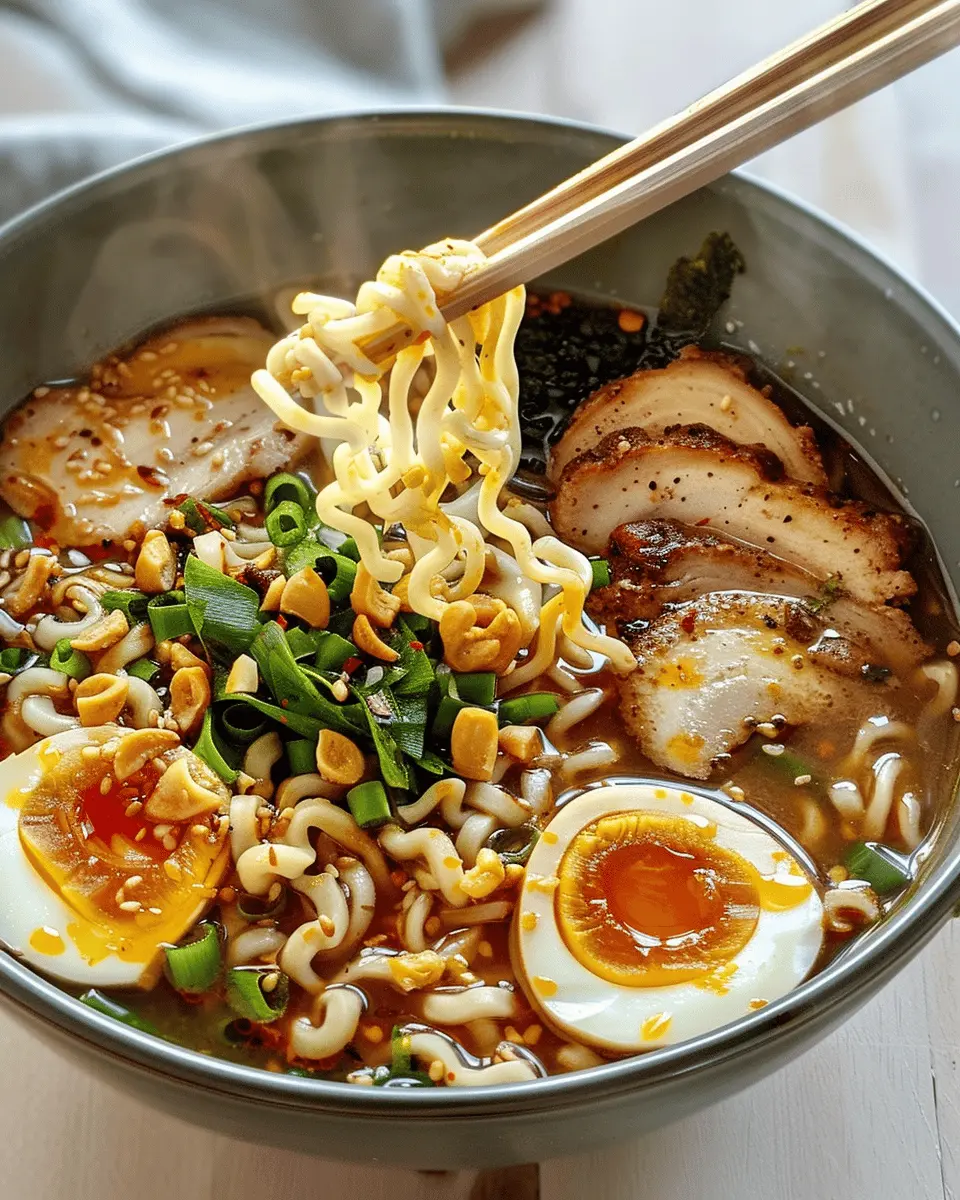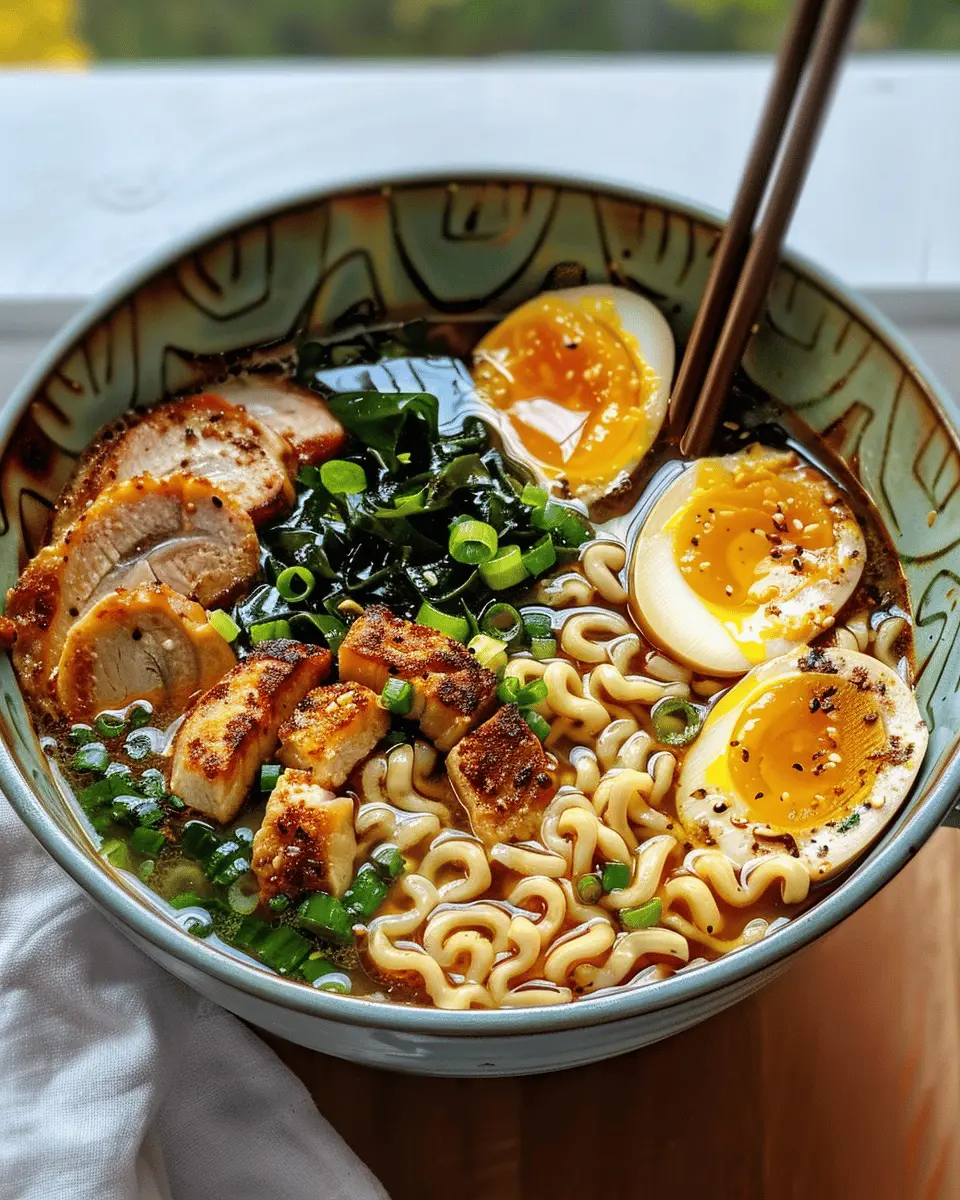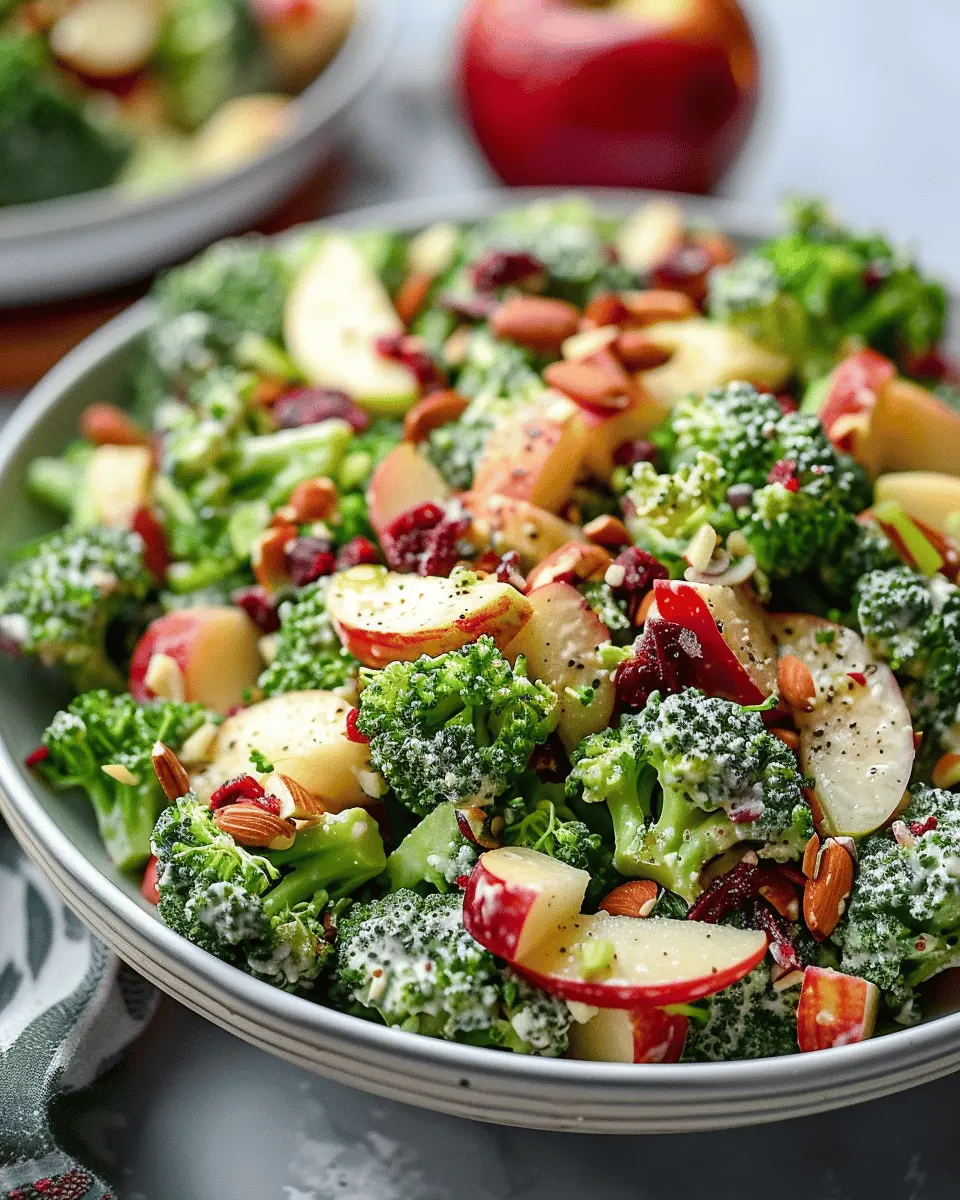Introduction to Homemade Ramen
If you’ve ever savored a bowl of warm, flavorful ramen at a cozy restaurant, you know why it’s such a beloved dish. But what if I told you that making homemade ramen can elevate your culinary experience even further? Believe it or not, preparing your own ramen at home is a complete game-changer. Not only does it allow for complete creative control, but it also brings a level of warmth and nostalgia that you just can’t replicate.
Why Homemade Ramen is a Game-Changer
Let’s take a moment to appreciate the beauty of homemade ramen. One of the most significant advantages is:
-
Personalization: Imagine crafting a broth exactly to your liking, perhaps a savory beef base or a rich chicken flavor. You can tweak the seasoning, spice it up with extra chili, or dial it down for a gentler taste.
-
Quality Ingredients: When you make your own ramen, you can choose fresh ingredients that align with your dietary preferences. This means you can swap out traditional toppings, like using Turkey Bacon for a delicious smokiness or Chicken Ham for added protein. You control what goes into your meal.
-
Cost-Effectiveness: While eating out can be a delightful treat, consistent visits to ramen shops add up. By preparing homemade ramen, you can create numerous bowls for the price of just a couple at a restaurant.
-
Health Benefits: Did you know that making your own broth can be far healthier than those store-bought options? You can omit preservatives and control sodium levels, making your soup nourishing as well as delicious.
A report by the Food Institute indicates that home cooking has surged in popularity, especially among young professionals seeking healthier and more budget-friendly meal options. Preparing homemade ramen allows you to keep up with this trend, all while indulging in a tasty and satisfying meal.
So, ready to roll up your sleeves and dive into the world of ramen? Whether you’re a novice in the kitchen or a seasoned chef, this journey into homemade ramen is bound to be enjoyable and fulfilling. Be prepared to impress your friends or even just treat yourself—because who doesn’t deserve a bit of comfort food now and then?

Ingredients for Homemade Ramen
Creating your own homemade ramen can be a fun culinary adventure. Here’s what you’ll need:
Essential ingredients list
- Noodles: You can choose fresh or dried ramen noodles, depending on availability.
- Broth: A rich chicken stock makes a delightful base. You can find recipes for making your own here.
- Protein: Consider adding sliced beef or your choice of chicken ham or turkey bacon for that hearty flavor.
- Vegetables: Green onions, bok choy, and mushrooms add great texture and taste.
- Seasonings: Soy sauce, miso paste, and sesame oil enhance Umami flavor.
Optional add-ins for customization
Don’t be afraid to get creative! Here are some options to personalize your bowl:
- Soft-boiled eggs: The perfect addition for creaminess.
- Corn kernels: Sweetness that contrasts beautifully with the salty broth.
- Seaweed sheets: A traditional touch that elevates presentation and taste.
By experimenting with various ingredients, you can tailor your homemade ramen to match your taste preferences perfectly!
Preparing Homemade Ramen
Creating your own homemade ramen is an incredibly satisfying process, and it’s sure to impress your friends and taste buds alike. Rather than opting for instant noodle packs, let’s walk through the steps to create a delicious bowl from scratch. In this section, we’ll dive into sautéing mushrooms, preparing the chicken breast, making a flavorful broth, cooking the ramen noodles, and then assembling everything into a beautiful dish.
Sauté the Mushrooms
Mushrooms add an earthy depth to your homemade ramen. We’re using shiitake or cremini mushrooms for their flavor and texture. Start by heating a tablespoon of olive oil in your skillet over medium heat.
- Prepare the mushrooms: Clean them with a damp cloth and slice them thinly.
- Sauté: Once the oil is shimmering, toss in the sliced mushrooms. Sauté for about 5 to 7 minutes until they’re golden brown and slightly crispy.
- Season: Add a splash of soy sauce to enhance their umami flavor.
You could also experiment with different types of mushrooms if you feel adventurous! For more inspiration on mushroom varieties, check out this comprehensive guide.
Prepare the Chicken Breast
Next up, we have the chicken breast, which will serve as the protein in our homemade ramen bowl.
- Cook the chicken: For this recipe, you can either grill, bake, or pan-sear the chicken breast. Season it with salt, pepper, and a dash of garlic powder, then cook until fully done—this usually takes about 15-20 minutes at 375°F (190°C) if you’re baking.
- Shred: Once cooked, let it rest for a moment, then shred the chicken into bite-sized pieces. This allows it to soak up the flavors of the broth when you combine everything.
Make the Flavorful Broth
Now for the star of the show—the broth! This step is crucial, as it sets the foundation for your homemade ramen experience.
- Ingredients: You’ll need chicken stock, miso paste, ginger, garlic, and a little sesame oil.
- Simmer: In a large pot, combine 4 cups of chicken stock with 2 tablespoons of miso paste. Add thinly sliced ginger and minced garlic for that aromatic flavor. Bring to a simmer and let it cook for at least 15 minutes.
- Flavor: Adjust the seasoning with a splash of soy sauce or a pinch of salt to taste.
Not all ramen broths are created equal—experimenting with different seasonings can yield exciting results. You might want to check out this resource on broth variations for insights.
Cook the Ramen Noodles
While your broth is simmering, turn your attention to the noodles. The type of ramen noodle you choose can impact the texture of your dish.
- Boil: Bring a separate pot of water to a rolling boil, adding a bit of salt.
- Cook: Once boiling, drop in the ramen noodles and cook according to package instructions (usually around 3-5 minutes).
- Drain: After cooking, drain and rinse the noodles in cold water to stop the cooking process, ensuring they maintain their delightful chewiness.
Assemble Your Delicious Bowl
Finally, it’s time to bring all the components together for your homemade ramen masterpiece!
- Primer: Start with a generous ladle of your flavorful broth at the bottom of a deep bowl.
- Noodles: Add a nest of the cooked ramen noodles in the broth.
- Toppings: Layer on your sautéed mushrooms and shredded chicken, and don’t forget to garnish with green onions, a sprinkle of sesame seeds, or even a soft-boiled egg if you’re feeling fancy.
Take a moment to admire your creation before digging in—the aroma alone is bound to make your mouth water! Enjoy the process and the flavors as you savor every slurp of your homemade ramen. It’s a warming dish that you can delight in any time of year!

Variations on Homemade Ramen
Vegetarian Ramen Options
Looking to switch things up? Vegetarian homemade ramen is a delicious alternative that can still satisfy your noodle cravings. One simple way to go meat-free is to create a hearty vegetable broth. Start with a base of onions, garlic, ginger, and carrots simmered in water to release those rich flavors. Add a splash of soy sauce or miso for extra depth.
To amp up the nutrition, throw in chopped bok choy, shiitake mushrooms, and corn. Tofu is another great protein source; opt for firm tofu, marinated and pan-seared for that lovely golden crust. Finish it off with a sprinkle of sesame seeds and sliced green onions for that delightful crunch. You can explore more plant-based ideas on Minimalist Baker to inspire your next bowl.
Spicy Ramen for Heat Lovers
Are you someone who loves a kick? Then spicy homemade ramen might just become your new favorite comfort food! Start with your basic broth and add a generous dollop of chili paste or Sriracha—don’t hold back! If you want to elevate the heat without sacrificing flavor, consider adding a touch of smoked paprika or a few slices of fresh jalapeño.
For an extra dimension, try incorporating spicy miso, which adds both heat and umami in one fell swoop. Topping your spicy ramen with Turkey Bacon or Chicken Ham can create a delightful contrast, blending heat with savory goodness. Just remember, when it comes to spice, you can always start mild and ramp it up until you hit that perfect spot! Want more inspiration on spice levels? Check out Serious Eats for all the spicy options you can imagine.
Each of these variations ensures you can customize your homemade ramen experience, making it uniquely yours! Which one will you try first?
Cooking Tips for Homemade Ramen
Making homemade ramen can be a delightful culinary adventure, and a few tips can elevate your dish to the next level.
Pro Tips for Noodle Perfection
To achieve the ultimate noodle texture, consider the following:
- Use high-protein flour: This helps create a firmer noodle with a delightful chewiness. If available, look for “bread flour” or specialized ramen flour.
- Don’t skip the alkaline water: This is key to replicating the texture of traditional ramen. If you can’t find it, a mixture of baking soda and regular water can work as a substitute.
- Cook noodles just right: Aim for al dente; they’ll continue to cook in the broth, absorbing its flavors.
Ingredient Substitutes for Dietary Needs
Many people have unique dietary preferences, and homemade ramen can be quite flexible. Here are some substitutes:
- Gluten-free noodles: Use rice noodles or gluten-free ramen alternatives.
- For protein: Swap in turkey bacon or chicken ham for a leaner twist.
- Vegetarian options: Replace beef with mushrooms, tofu, or tempeh for a hearty bite.
For additional tips and inspiration, check out Bon Appétit. Enjoy your homemade ramen journey!

Serving Suggestions for Homemade Ramen
Ideal Toppings and Garnishes
Transform your homemade ramen bowl into a feast for the senses with tantalizing toppings! Here are some favorites:
- Soft-Boiled Eggs: Cook them to creamy perfection for a silky texture.
- Turkey Bacon or Chicken Ham: These alternatives offer a savory crunch without the heaviness.
- Green Onions: Chop for that zesty fresh kick.
- Nori Sheets: The flavorful seaweed adds umami; just tear and sprinkle!
- Mushrooms: Shiitake or enoki unlock rich flavors and texture.
- Corn: Sweet kernels contrast beautifully with broth.
Each topping can make a significant difference in your ramen bowl, so feel free to mix and match according to your taste.
Best Side Dishes to Complement Ramen
Looking to elevate your ramen experience? Consider these delightful side dishes:
- Gyoza: These crispy dumplings accompany ramen perfectly.
- Edamame: Steamed and lightly salted, they provide a healthy crunch.
- Seaweed Salad: Packed with nutrients, it adds a refreshing pop to your meal.
Sharing your meal with friends over these sides not only enhances the flavors but also fosters a sense of togetherness. So, what are you waiting for? Dive into creating your own homemade ramen experience!
Time Breakdown for Homemade Ramen
When it comes to whipping up homemade ramen, timing is everything. Here’s a quick glimpse into the time requirements you’ll need to keep in mind for that perfect bowl of noodles.
Preparation Time
Getting everything ready for your homemade ramen can take about 30 minutes. This includes chopping veggies, prepping your proteins like turkey bacon or chicken ham, and getting your broth ingredients together.
Cooking Time
The actual cooking process will take you around 1 hour. This includes simmering your broth until it’s packed with flavor, boiling the noodles, and quickly sautéing any veggies or meats.
Total Time
In total, you’re looking at about 1 hour and 30 minutes from start to finish. While it might seem like a bit of an investment, trust me, the delicious, sizzling aroma wafting through your kitchen is well worth it!
For additional ramen inspiration, check out Serious Eats for detailed broth guides. They’ll help you deepen your ramen cooking experience. Happy cooking!
Nutritional Facts for Homemade Ramen
When you whip up a comforting bowl of homemade ramen, it’s not just delicious—it’s also pretty nutritious. Let’s dive into the numbers!
Calories per Serving
A typical serving of homemade ramen contains around 400 to 600 calories, depending on your chosen ingredients, broth, and toppings. That makes it a great meal choice for lunch or dinner when you need a satisfying bowl of goodness.
Macronutrient Breakdown
Here’s a quick peek at the macronutrients you’ll find in your bowl:
- Carbohydrates: 60-80g
- Protein: 20-30g
- Fat: 10-20g
Using ingredients like whole grain noodles and lean proteins, such as chicken ham or turkey bacon, can elevate both the nutritional profile and flavor. For more insights on healthy eating, consider checking resources like the USDA FoodData Central for detailed nutrition information.
Crafting your own homemade ramen allows you to customize flavors while keeping an eye on your health—what’s not to love?
FAQs about Homemade Ramen
Can I make ramen in advance?
Absolutely! You can prepare your homemade ramen broth and toppings in advance. Just keep the broth in an airtight container in the fridge for up to 3 days or freeze it for longer storage. When you’re ready to serve, simply reheat the broth and cook fresh noodles. Storing toppings like Turkey Bacon or Chicken Ham separate will also ensure they stay fresh and delicious until you’re ready to enjoy your bowl of ramen.
What noodles are best for homemade ramen?
For your homemade ramen, the best noodles are fresh or frozen ramen noodles, which you can find at Asian grocery stores. These noodles have a unique texture that absorbs the broth beautifully. If fresh noodles are unavailable, you can use dried ramen noodles as a substitute, but they may not have quite the same chewiness. If you’re curious, you might want to check out Serious Eats for more insights on ramen noodle choices.
What can I use instead of chicken broth?
If you’re looking to swap out chicken broth, you have several flavorful options. Vegetable broth works well, especially if you enhance it with ginger and garlic for an extra kick. You might also consider dashi, a Japanese soup stock made from kombu (seaweed) and bonito flakes. It provides a rich umami flavor, making it an excellent alternative for your homemade ramen. If you’re not sure where to start, Japanese cooking blogs can offer some great tips to explore.
Incorporating these FAQs into your ramen-making journey will help ensure you create a bowl that’s not only satisfying but also tailored to your preferences. Happy cooking!
Conclusion on Homemade Ramen
Homemade ramen is not just a delightful dish; it’s an experience that brings warmth and creativity to your kitchen. By crafting your own noodles and broth, you gain control over the flavors and ingredients, allowing for a healthier and personalized meal. Plus, it’s a fun culinary journey that can impress friends and family alike.
So why not roll up your sleeves and give it a go? You might uncover new flavor combinations or even start a new tradition. For tips on perfecting your broth, check out this resource on ramen broth essentials. Your taste buds—and your wallet—will thank you.
PrintHomemade Ramen: Easy and Delicious Bowl with Turkey Bacon & Beef
A comforting and delicious homemade ramen recipe that combines turkey bacon and beef for a rich, flavorful broth.
- Prep Time: 15 minutes
- Cook Time: 15 minutes
- Total Time: 30 minutes
- Yield: 4 servings 1x
- Category: Main Dish
- Method: Stovetop
- Cuisine: Japanese
- Diet: Paleo
Ingredients
- 4 cups chicken broth
- 200 grams ramen noodles
- 100 grams turkey bacon
- 100 grams ground beef
- 2 green onions, chopped
- 2 soft boiled eggs
- 1 tablespoon soy sauce
- 1 teaspoon sesame oil
- 1 garlic clove, minced
- 1 inch ginger, grated
Instructions
- In a pot, heat sesame oil over medium heat.
- Add turkey bacon and ground beef, cooking until browned.
- Stir in garlic and ginger, cooking for 1 minute.
- Pour in chicken broth and soy sauce, bringing to a simmer.
- Add ramen noodles, cooking according to package instructions.
- Serve in bowls topped with chopped green onions and soft boiled eggs.
Notes
- Adjust the seasoning with more soy sauce or salt to taste.
- Feel free to add more vegetables like spinach or bok choy.
Nutrition
- Serving Size: 1 bowl
- Calories: 450
- Sugar: 1g
- Sodium: 800mg
- Fat: 25g
- Saturated Fat: 8g
- Unsaturated Fat: 15g
- Trans Fat: 0g
- Carbohydrates: 40g
- Fiber: 2g
- Protein: 25g
- Cholesterol: 150mg
Keywords: Homemade Ramen, Ramen Recipe, Easy Ramen













